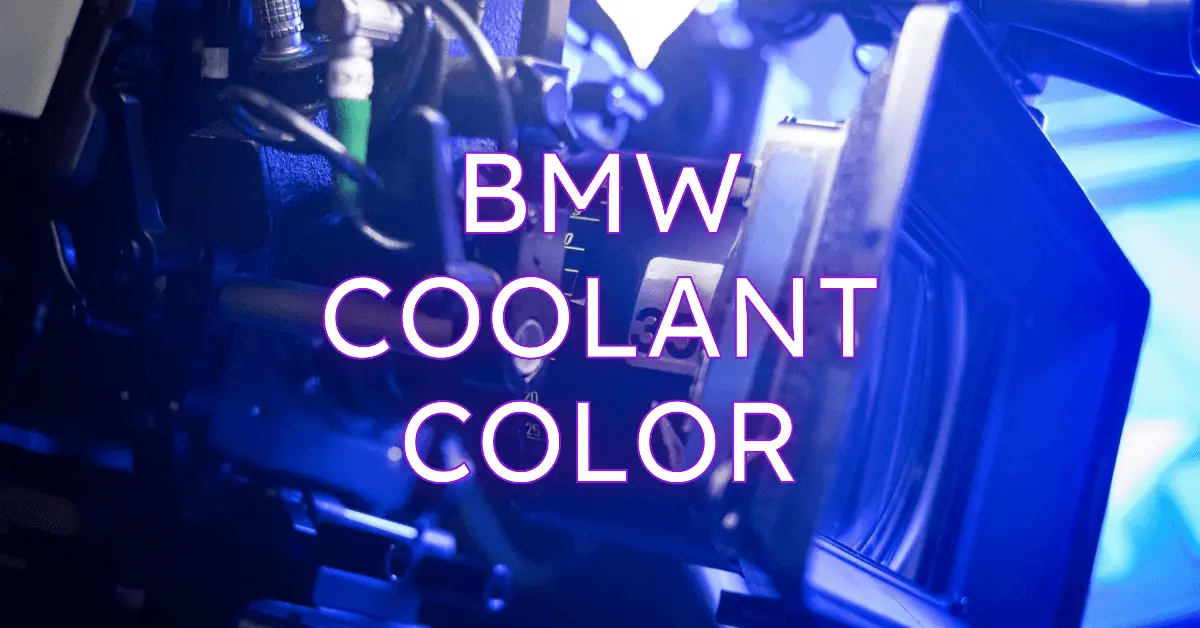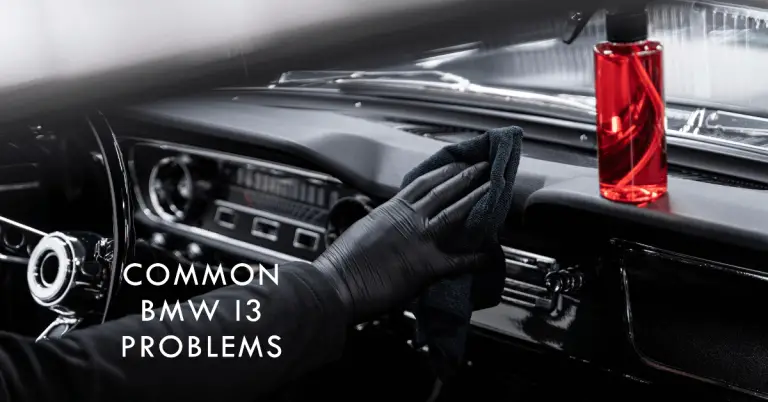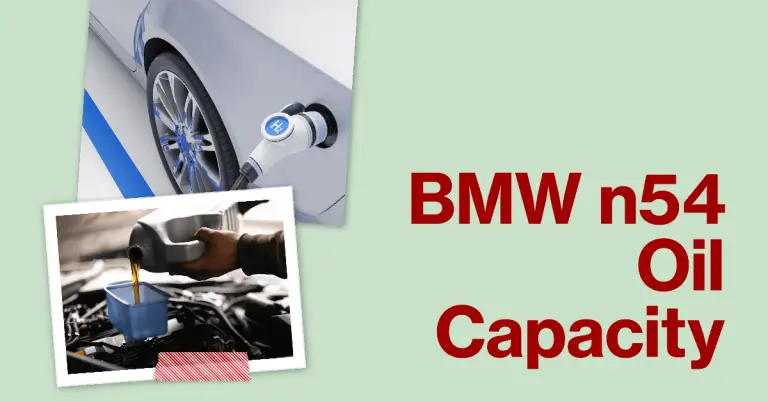BMW Coolant Colour: What You Need to Know
Have you ever opened up your BMW’s hood and noticed the coolant reservoir contains a bright color like orange, blue, or pink? BMW has used various coolant colors through the years, each with their own specific purpose and chemistry. Using the incorrect coolant color can negatively impact your BMW’s engine performance and longevity.
In this comprehensive guide, we’ll cover everything you need to know about BMW coolant colors – what they mean, when BMW switched between colors, how to choose the right one, and plenty of FAQs. You’ll learn how to avoid expensive mistakes and use the proper coolant recommended for your BMW model and engine.
A Brief History of BMW Coolant Colors
Before jumping into the specifics of each color, it helps to understand why BMW has changed their coolant formulas multiple times over the decades. These changes reflect evolving engine technologies and chemistries.
In the early days, BMW exclusively used a blue coolant color. This was formulated for their engines with traditional iron blocks. Blue coolant provided corrosion inhibition and freezing protection without damaging those iron engine components.
However, in the 1990s, BMW introduced new engines with aluminum cylinder blocks. Aluminum is lighter than iron, helping improve fuel economy and performance. But aluminum is also more prone to corrosion when exposed to the wrong chemicals. BMW’s old blue coolant formula was no longer suitable.
So in 1996, BMW switched to a new OAT coolant technology – from blue to pink! This OAT (Organic Acid Technology) coolant offered superior corrosion protection for aluminum engine parts. It also had a longer service life, needing less frequent changes compared to the old blue.
BMW continued using pink OAT coolant for two decades across their lineup. But by 2016, they decided it was time to switch things up again. This time, BMW moved to an orange OAT formula designed for even longer service intervals – up to 15 years! It was branded as BMW “Longlife” coolant, intended for their latest high-performance engines.
However, that doesn’t mean the older coolants are totally obsolete. Let’s take a closer look at what each color means, and what models they’re designed for.
Blue Coolant: For Older Iron Block Engines
As discussed above, the original BMW coolant used up until the mid-1990s was blue in color. Specifically, it’s a conventional ethylene glycol-based formula. This offers anti-freeze protection and inhibits corrosion in iron engine blocks.
While the blue coolant is obsolete for newer BMW aluminum engines, it can still be used safely in older iron-block motors. This includes classics like the E30 3 Series, E28 5 Series, and E24 6 Series models built up until the early 1990s.
If you have an older BMW with the factory fill blue coolant still intact, or need to top it off, using the correct blue fluid is important. Mixing with newer OAT coolants can create corrosion. Stick with a BMW-approved blue when servicing vintage iron block models. Basic green universal coolants also risk corrosion and should be avoided.
Key notes about blue BMW coolant:
- Formulated for pre-1990s iron block engines
- Offers anti-freeze and anti-corrosion for iron
- Requires more frequent coolant changes
- Not compatible with newer OAT coolants!
Fortunately, while you won’t find the blue coolant on BMW dealer shelves today, it is still available from specialty suppliers online for servicing classic BMWs. Make sure to use a genuine OEM fluid, not generic blue.
Pink Coolant: For 1990s-2010s Aluminum Engines
In 1996, BMW ushered in a new era by introducing their first aluminum engine blocks. Starting with that year’s 3 and 5 Series, BMW began rolling out new lightweight aluminum engines across their lineup. This improved fuel efficiency and performance.
But as discussed earlier, aluminum had different chemical needs compared to traditional iron blocks. So BMW formulated an advanced OAT (Organic Acid Technology) coolant in a new pink color. This innovative fluid delivered superior corrosion protection for aluminum engines.
BMW used this popular pink coolant for the next 20 years, up until 2016. It was factory-filled in models like the E36, E46, and E90 3 Series, along with 5, 6, 7, X3, X5 models, and more from the mid-1990s into the 2010s.
Key notes on the pink OAT coolant:
- Introduced in 1996 for aluminum engine blocks
- Provides extra anti-corrosion for aluminum
- Longer service life than blue coolant
- Not compatible with older blue or newer orange!
Like the old blue, BMW’s pink antifreeze/coolant is obsolete for the newest BMW models. However, it’s still ideal for models that had it as the factory fill. If your BMW was built between 1996-2016, be sure to use the proper pink fluid for servicing the cooling system. Mixing with generic coolants or the newer orange will cause corrosion.
Orange Coolant: For 2016+ BMW Models
The most modern BMW coolant color is orange, which was introduced in 2016. This newest OAT formula is designed for extended service life of up to 15 years or 150,000 miles before needing replacement. For this reason, BMW markets it as “Longlife” coolant.
The orange fluid exceeds the corrosion protection of even BMW’s previous pink coolant. It’s formulated specifically for their latest generation of turbocharged engines, including high-performance M models and hybrids. This coolant ensures optimal performance and longevity from BMW’s newest powerplants.
Here are some key facts about BMW’s current orange OAT coolant:
- Launched in 2016 for newest-gen BMW engines
- Exceeds corrosion protection of previous coolants
- Designed for extended 15yr/150k mile service life
- Found in 2016+ models as factory fill
Make sure to always use Genuine BMW Orange Longlife coolant if your model came filled with it from the factory. Mixing with other coolant types or generic brands will compromise protection. Never mix orange and older pink or blue inside your BMW.
How to Choose the Right BMW Coolant?
Now that you understand BMW’s different coolant colors through the years, how do you pick the right one for your particular model? Here is a summary of how to select:
- For pre-1990s iron block engines: Use old-style blue coolant formulated for iron blocks
- For 1990s-2016 aluminum engines:
- Use OAT pink coolant designed for aluminum corrosion protection
- For 2016-present models: Look for orange “Longlife” coolant designed to last 15+ years
The easiest way to determine what color your BMW needs is to check your owner’s manual or service records for the factory coolant. If that’s unavailable, you can look up your BMW by model year to see when they switched coolant technologies:
- Up to mid-1990s: Blue coolant
- 1996-2016: Pink coolant
- 2016-present: Orange coolant
When servicing your BMW’s cooling system, never mix different colored coolants together. Diluting or altering the OEM chemistry can cause serious corrosion and damage.
Sticking with the factory fill color is crucial – even when just topping off due to low coolant level. Only use BMW branded fluid, not generic coolant. With BMW’s precision engines, you can’t afford to cut corners on the lubricating and protective coolant.
Frequently Asked Questions About BMW Coolant
We’ll finish this guide by answering some common FAQs about BMW coolant colors:
Is blue BMW coolant still available?
Yes, while outdated for newer BMWs, genuine BMW blue coolant is still sold for servicing older iron block engines. Make sure to use it only as directed for pre-1996 models, never mixing with pink or orange OAT coolant.
What color is BMW LL coolant?
BMW LL refers to “Longlife” coolant, which is the orange fluid designed to last up to 15 years. Don’t confuse LL with the old pink coolant. Always use orange LL coolant as specified by BMW for 2016+ models.
Can I mix different BMW coolant colors?
No, do not mix different BMW coolant colors together! Each formula is specially developed for certain models and engine types. Mixing the wrong colors can cause catastrophic corrosion and clogging. Always use the exact coolant color recommended by BMW for your vehicle.
Does the coolant color matter if I flush the system?
Yes, it’s critical to use the proper BMW coolant even after a system flush. That ensures you refill with the ideal anti-corrosion formula designed for your BMW’s engine. Flushing doesn’t remove the need to use the correct color.
What about using universal coolant in a BMW?
Avoid universal or generic coolants lacking BMW certification. They do not offer the precise corrosion protection formulated for your BMW. To maintain performance and avoid damage, always stick with genuine BMW fluid in the factory fill color.
Conclusion
Whether it’s blue, pink, or orange, the color of your BMW coolant matters! Each color was developed by BMW to protect specific engines. Using the wrong coolant can corrode aluminum components.
That’s why it’s so important to determine your BMW’s factory fill coolant, and continue servicing with that same formulation. Never mix incompatible coolant colors or technologies in your vehicle.
While the older BMW coolants are outdated for the newest models, they’re still vital for servicing vintage iron block and 1990s-2000s aluminum engines. Fortunately BMW still offers their classic coolants for older restorations.
We hope this guide has helped demystify the importance of BMW coolant colors. With some simple research into your model year, you can ensure you’re using the proper fluid to protect your ultimate driving machine. Your BMW’s performance and longevity depend on it!







